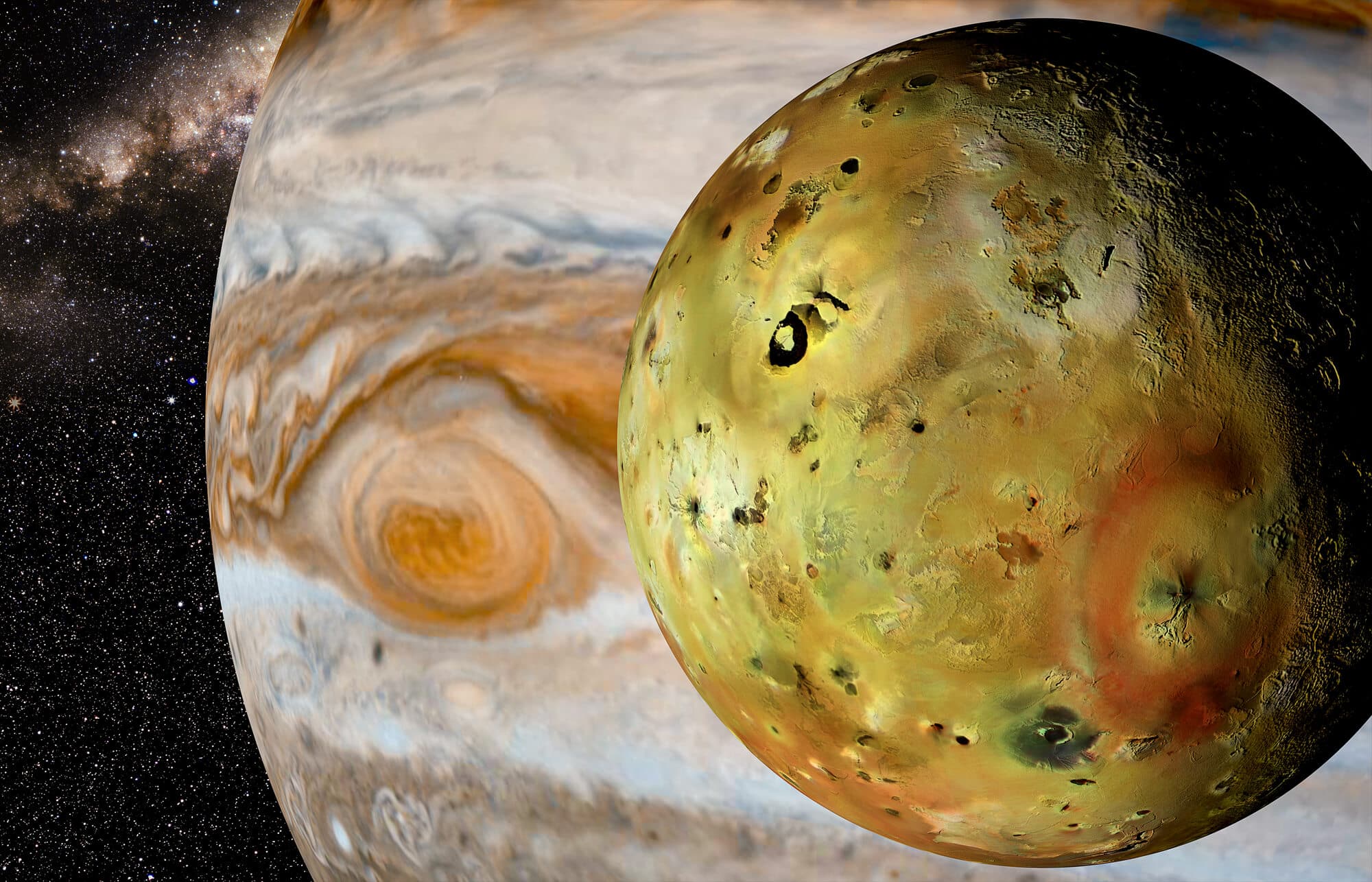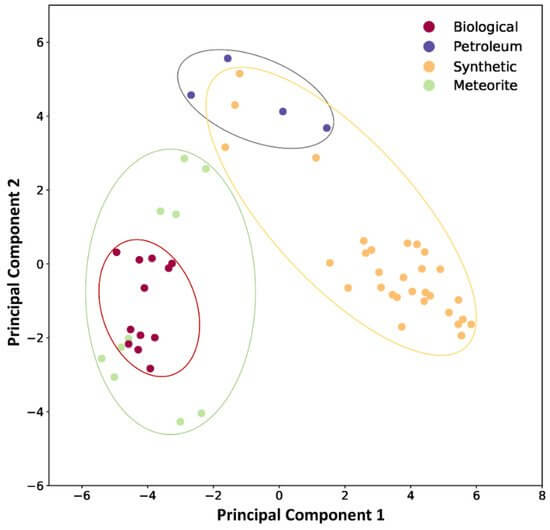Future space exploration missions in the solar system will focus on the search for extraterrestrial life, led by Clipper Europa, which will fly to the large fair moon in 2024, but this life may not resemble life on Earth. A new analysis method of the mass spectroscopy type may allow the discovery of extraterrestrial life of the alien type
[Translation by Dr. Moshe Nachmani]

Scientists have begun the search for extraterrestrial life in our solar system in earnest, and yes, such life may be very different from life on Earth, where methods based on detecting certain compounds as biosignatures may not be suitable for life that evolved differently. A new study conducted by a Japanese-American research team led by researchers from the Tokyo Institute of Technology describes a 'machine learning'-based method that evaluates organic mixtures using mass spectrometry to reliably classify them as biological or non-biological.
The question "Are we alone?" (meaning - in the universe as living beings) has intrigued humanity for hundreds of years, and the human race began to search for extraterrestrial life in our solar system since the 'Viking 2' mission that led NASA to Mars in 1976. Today there are several methods by which scientists search for extraterrestrial life. These methods include, among others, listening to radio signals from advanced civilizations in deep space; Searching for subtle differences between the compositions of the atmospheres of planets around other stars; and a direct attempt to measure the composition of materials within soil and ice samples collected by spacecraft in our solar system. The third method allows researchers to use the most advanced analytical instrumentation for direct chemical examination of samples from extraterrestrial sources, and perhaps even return some of these samples to Earth for more careful examination in a laboratory and more advanced instruments. Exciting space exploration missions, such as the rover (a vehicle or robot that is able to move on the surface of a planet or other celestial body) Perseverance (NASA's Perseverance which will search for signs of life on Mars this year; the Europa Clipper probe which will be launched in 2024 and try to take samples of ice ejected from the outer surface of Europa (one of Jupiter's moons); and the Dragonfly program that will try to land a robotic spacecraft on Saturn's moon, Titan, starting in 2027. All these programs will try to answer the age-old question "Are we alone in the universe?" ".
The new spacecraft to Jupiter
Mass spectroscopy is a fundamental method that scientists rely on in the search for extraterrestrial life. The great advantage of the method is that it is able to simultaneously measure a large collection of compounds present in the sample, and therefore provide a kind of "fingerprint" of the sample's composition. At the same time, the interpretation of these signatures can be challenging. At best, scientists can claim that all life forms on Earth are based on common molecular principles, a fact that provides them with certainty that all life forms on Earth evolved from a common ancient terrestrial ancestor. However, as part of the simulations of the basic processes that scientists believe contributed to the origin of life on Earth, similar but slightly different versions of the basic molecules on which terrestrial life forms are based are also discovered. Moreover, chemical processes occurring in nature can also create many of the building blocks of biological molecules. In light of the fact that we still do not have a known sample of extraterrestrial life, the situation leaves scientists with a conceptual paradox: was the development of life on Earth made possible thanks to random choices made at the beginning of development and assimilated here, and therefore life could also develop in a different way, or should we expect all forms of life in the universe to develop In the same way as on Earth? How will the scientists know if the discovery of a specific type of molecule is indeed exclusive to extraterrestrial production?
How to detect life forms in soil sample testing laboratories?
For many years scientists have been troubled by the question of whether their biased view of how life forms, which are clearly based on the life forms we know on Earth, are supposed to be discovered, could fail our measurement methods. In fact, the Viking 2 mission from Mars in 1976 also brought strange results. Some of the tests carried out as part of this mission led to receiving signals that were considered positive for life, but mass spectroscopic measurements did not produce any evidence of life forms as we know them. Recently, as part of NASA's Curiosity rover mission to Mars, organic compounds were found on the surface of the planet Mars, but they still do not provide conclusive evidence for the existence of life there. A similar problem awaited scientists trying to locate the earliest evidence of life on Earth: how can we know for sure that the origin of signals found in ancient terrestrial samples is indeed from the original living organisms preserved within these samples, or that they originate from contamination from the organisms that exist on Earth today ?
The international research team tried to solve these two problems by combining experiments with a computerized machine learning approach. Using high resolution mass spectroscopy (FT-ICR MS) they were able to measure the mass spectra of a wide variety of complex organic mixtures, including those from non-biological samples created in the laboratory (which the researchers are sure are not of living origin), organic mixtures found In meteorites (specimens of non-biological organic compounds from about four and a half billion years ago, which never became life forms), laboratory-created microorganisms, and crude oil itself formed from ancient life forms. Each of these samples contained tens of thousands of distinct molecular compounds, a number that provided a large collection of spectroscopic measurements that could be compared and classified.
Use of artificial intelligence

In contrast to approaches where the precision of measurements of this spectroscopy (MS) method was used to uniquely identify each and every one of the signatures of the various molecules within a complex organic mixture, the researchers added together all the data obtained and examined the statistics and the extensive dispersion of all the signals. Complex organic mixtures, those derived from living organisms, crude oil and non-biological samples exhibited very different fingerprints when viewed in this way. For humans, such patterns are more difficult to detect than the presence or absence of individual types of molecules. The researchers fed their raw data into a computerized machine learning algorithm and discovered to their surprise that the algorithms were able to classify the molecules as biological or non-biological with 95% accuracy. More importantly, they succeeded in this even after the researchers simplified the raw data significantly, so that in the future it will be possible to achieve the same level of accuracy with the help of instruments with a lower resolution that are on the research spacecraft. The researchers explain that biological processes are different from non-biological processes: biological processes must create copies of themselves (as in the case of DNA and RNA), while non-biological processes lack any internal mechanism that controls them. "This study opens a window for the use of high-resolution mass spectroscopy for astrobiological applications," says one of the authors of the article describing the study.
The lead researcher adds: Although it is difficult, if not impossible, to characterize each ingestion of a complex chemical mixture, the extensive distribution of the components can contain patterns and relationships that provide additional information regarding the process that is the source of the many compounds. If we want to properly understand the field of complex pre-life chemistry, we will need new ways and to think in terms of these extensive patterns - how they were formed, what they imply, and not in terms of the presence or absence of individual molecules. This article constitutes an initial milestone regarding the feasibility and development of such characterization methods using the method of mass spectroscopy with high resolution - there is significant information in the signal dispersion that can be used to identify the samples through the type of process by which the compounds were created. This reference analysis method may provide us with many advantages in the field of searching for life in our solar system, and even within the framework of laboratory experiments designed to reconstruct the origin of life."
More of the topic in Hayadan:
- Organic material was found on an asteroid sample returned by Yabusa 2
- A rover to Titan's moon or collecting a sample from Rosetta's comet - which will NASA choose?
- The sword of cuts in Trump's budget proposal will not significantly harm NASA
- A giant planet orbiting a red dwarf blurs the line between large planets and small stars
- Europa-Clipper
